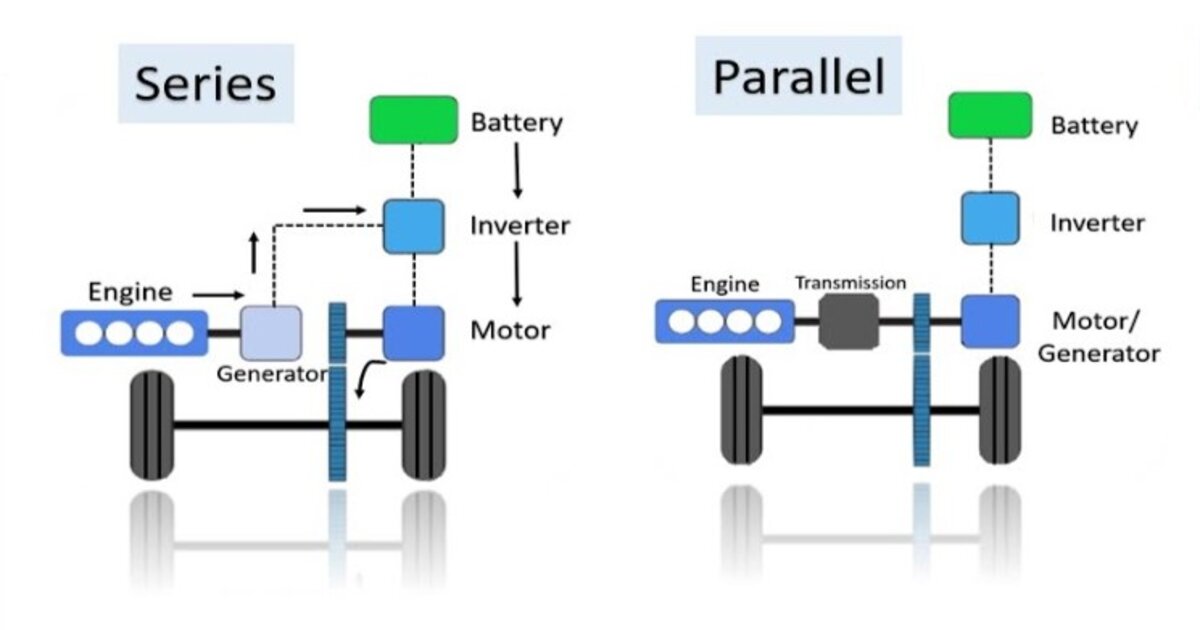
There are different types of electric vehicles (EVs) according to their function, Purpose, and characteristics. But there are four basic types of electric vehicles (EVs) available today.
- Battery Electric vehicles (BEVs).
- Plug-in Hybrid Electric Vehicles (PHEVs).
- Hybrid Electric Vehicles (HEVs).
- Series Hybrid.
- Parallel Hybrid.
- Fuel Cell Electric Vehicles (FCEVs).
Battery Electric Vehicles (BEVs)
These vehicles are solely powered by electricity stored in rechargeable batteries. BEVs do not have a traditional internal combustion engine and produce zero tailpipe emissions. They offer a fully electric driving experience and require external charging infrastructure to recharge their batteries.
Plug-in Hybrid Electric Vehicles (PHEVs)
PHEVs combine an electric motor with an internal combustion engine. They have a rechargeable battery pack that can be charged from an external power source, allowing for a certain all-electric driving range. Once the battery is depleted, the PHEV can switch to the internal combustion engine or alternate fuel for extended range.
Hybrid Electric Vehicles (HEVs)
HEVs also combine an electric motor with an internal combustion engine, but they cannot be charged externally. The electric motor assists the engine during acceleration and recaptures energy through regenerative braking. HEVs primarily rely on gasoline or another fuel and do not offer all-electric driving capabilities.
Hybrid electric vehicles have the following two types depending on their drive system series hybrid and parallel hybrid.

1. Series Hybrid Electric Vehicles
In a series hybrid vehicle internal combustion engine and electric motor are connected in series which means the internal combustion engine will act as a generator and produce electric power which powers the electric motor.
2. Parallel Hybrid Electric Vehicles
Parallel hybrid vehicle electric motor and internal combustion engine both are connected to the vehicle transmission and drive wheels at the same time.
The electric motor of the parallel hybrid provides power during acceleration as the electric motor provides high starting which will help to get starting torque to the vehicle. This will help to reduce the starting power required by the internal combustion engine and improve the efficiency of the vehicle.
Fuel Cell Electric Vehicles (FCEVs)
FCEVs use hydrogen fuel cells to generate electricity, which powers the electric motor. Hydrogen is stored in onboard tanks and reacts with oxygen from the air in the fuel cell to produce electricity, emitting only water vapor as a byproduct. FCEVs are still in the early stages of commercialization and face infrastructure challenges.

